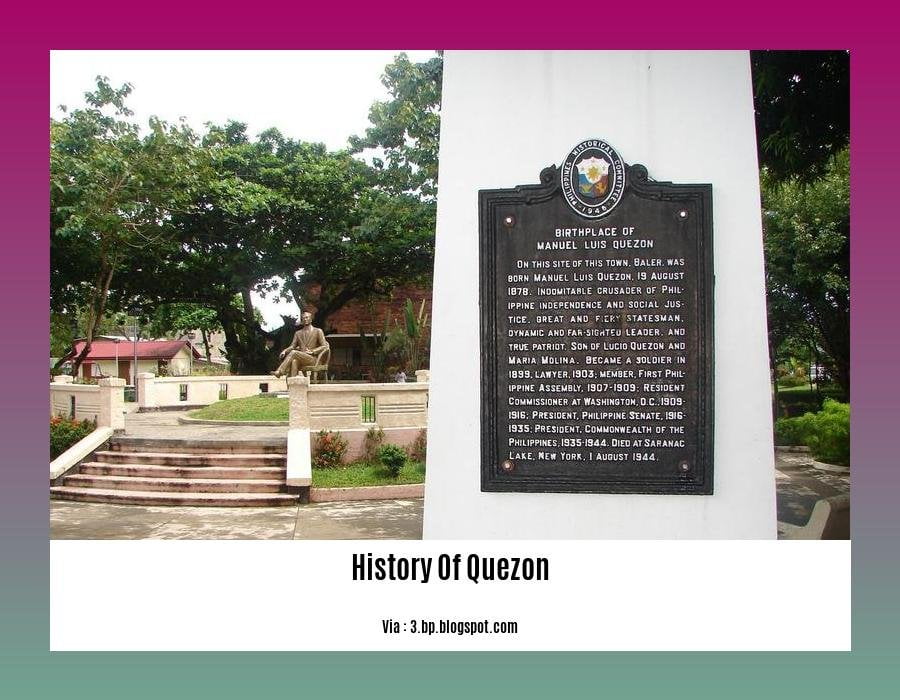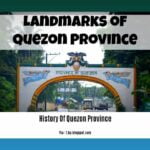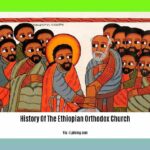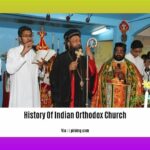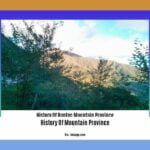In the tapestry of Philippine history, Quezon Province stands as a vibrant thread, its story woven with rich traditions, diverse cultures, and transformative events. This article delves into the historical journey of Quezon, exploring the research methods employed to uncover its hidden narratives. From meticulous archival research to insightful fieldwork and the careful analysis of church records, we embark on a quest to understand the province’s past, shedding light on its cultural heritage, political developments, and socio-economic transformations. Join us as we unveil the tapestry of Quezon’s history, unraveling the threads that have shaped its unique identity and contributions to the nation’s rich cultural fabric.
Key Takeaways:
- Quezon City was established on October 12, 1939, in honor of Manuel L. Quezon, the second president of the Philippines.
- Its purpose was to replace Manila as the national capital due to various issues in Manila like overcrowding and traffic congestion.
- Manuel Quezon, a renowned Filipino leader, played a crucial role in the Philippine independence movement.
- Despite his efforts to achieve full independence, his plans were disrupted by World War II. He passed away while leading the Philippine government in exile.
History of Quezon: Unraveling the Tapestry of a Philippine Province
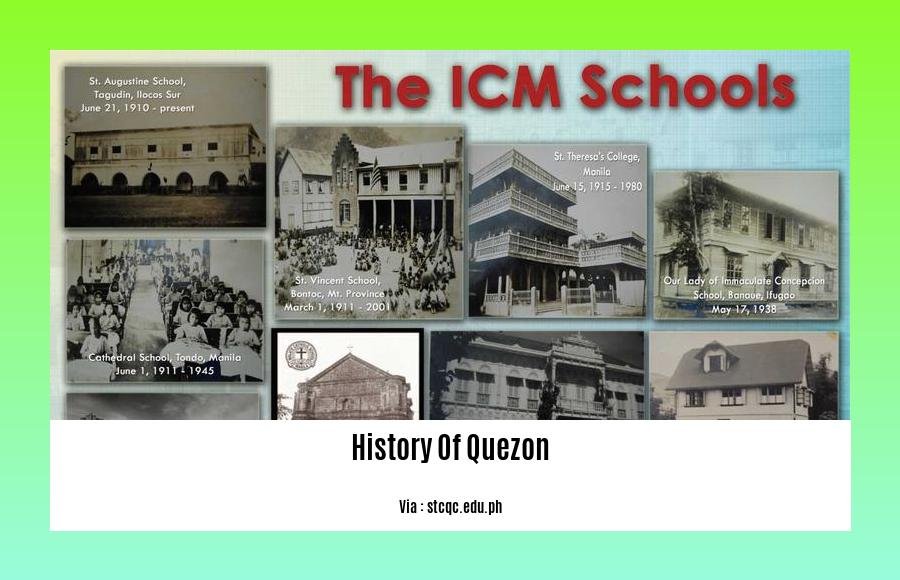
Embarking on a journey through the annals of Quezon’s history is like stepping into a time capsule, where the province’s rich past unfolds before our eyes. From its humble beginnings to its rise to prominence, Quezon has witnessed a remarkable transformation, leaving an indelible mark on the tapestry of Philippine history.
Pre-Colonial Roots
Quezon’s history can be traced back to pre-colonial times, when the province was inhabited by various indigenous communities. These early settlers established vibrant cultures and traditions that would later influence the province’s unique identity.
Spanish Colonial Period
The arrival of the Spanish colonizers in the 16th century marked a significant turning point in Quezon’s history. The province became a battleground for the Spanish and the indigenous tribes, with numerous uprisings and revolts taking place in the region.
American Occupation and the Commonwealth Era
The American occupation of the Philippines in the early 20th century brought about significant changes to Quezon. The province underwent rapid urbanization and modernization, with the establishment of new infrastructure and educational institutions.
World War II and the Liberation
Quezon played a crucial role during World War II, serving as a refuge for Filipino guerrillas and evacuees fleeing from the Japanese occupation. The province witnessed intense fighting, leaving behind a legacy of resilience and heroism.
Post-War Reconstruction and Development
After the war, Quezon embarked on a journey of reconstruction and development. The province focused on rebuilding its infrastructure, revitalizing its economy, and promoting education and healthcare.
The Legacy of Manuel L. Quezon
Quezon province is named in honor of Manuel L. Quezon, the second president of the Philippines. Quezon played a pivotal role in the country’s struggle for independence, and his legacy continues to inspire the province’s pursuit of progress and prosperity.
Quezon Today: A Thriving Province
Today, Quezon stands as a thriving province, known for its diverse landscapes, rich cultural heritage, and vibrant economy. The province is home to numerous historical landmarks, natural wonders, and educational institutions, making it a popular destination for tourists and investors alike.
If you could travel back in time, what would you do? Dive into the chronicles of Quezon Province and learn how this remarkable gem evolved into the beautiful land it is today. Explore its rich history, from the early settlers to its transformation into a premier province. history of quezon province
Do you have a passion for broadcasting? Unravel the captivating narrative of radio broadcasting in the Philippines. From its humble beginnings to its evolution into a diverse and influential medium, this journey will take you on a ride of historical significance. history of radio broadcasting in the philippines
Church Records
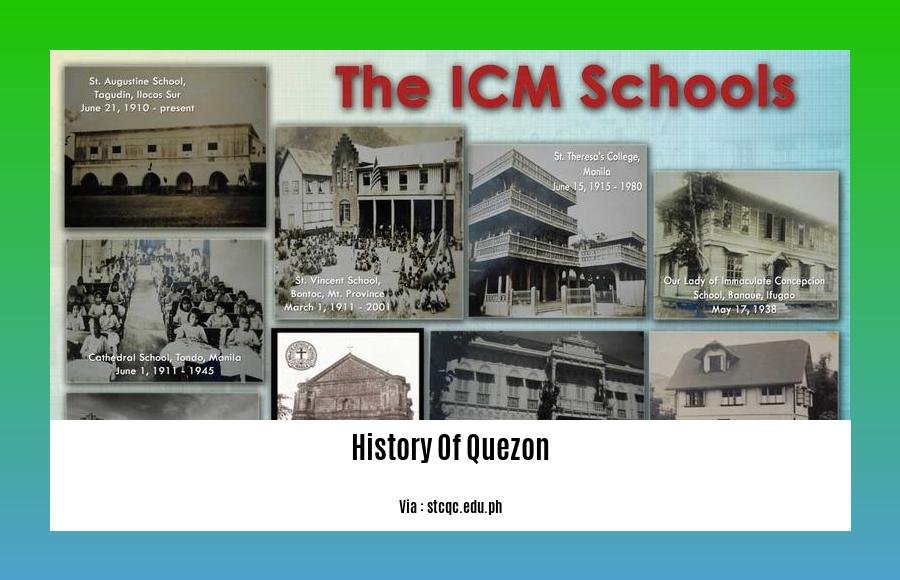
Quezon’s storied past is profoundly intertwined with the rich tapestry of its religious heritage, with church records standing as invaluable chronicles of the province’s spiritual journey. These meticulously kept archives, often dating back centuries, offer a glimpse into the lives of our ancestors, shedding light on their baptisms, marriages, and final farewells.
Key Takeaways:
- Church records in Quebec date back to the 17th century and serve as a vital resource for genealogists and historians.
- The Drouin Collection is an extensive compilation of digitized Quebec church records accessible online, providing a wealth of information for researchers.
- The Quebec Family History Society offers invaluable assistance to those seeking to unravel their Quebec roots.
- Careful scrutiny and comparison of church records with known facts are crucial to ensure accuracy due to potential errors.
The enduring value of church records lies in their ability to provide tangible connections to our forebears. Through these sacred texts, we can piece together the intricate puzzle of our family trees, gaining insights into the lives, loves, and losses of those who came before us.
For those embarking on a journey to trace their Quebec ancestry, the Drouin Collection stands as an indispensable tool. This vast digital repository houses a treasure trove of church records, meticulously transcribed and organized for ease of access. With just a few clicks, researchers can delve into the lives of their ancestors, uncovering hidden stories and illuminating the paths that led to their existence.
The Quebec Family History Society stands as a beacon of support for genealogists navigating the complexities of Quebec’s rich history. This dedicated organization offers a wealth of resources, including workshops, seminars, and access to a network of experienced researchers. Their expertise and guidance prove invaluable to those seeking to unravel the mysteries of their past.
It is imperative to approach church records with a discerning eye, as errors may occasionally arise. By carefully comparing the information gleaned from these records with known facts and corroborating evidence, we can ensure the accuracy of our family histories.
Relevant URL Sources:
The Drouin Collection Records – Généalogie et histoire du Québec
Reading the Records
Quezon City’s legacy stretches far beyond its modern facade, and to truly grasp its essence, one must delve into the annals of its past, tracing the threads that weave together its rich tapestry.
Key Takeaways:
- Quezon City’s history is entwined with the life of Manuel L. Quezon, the visionary leader who envisioned it as the Philippines’ capital.
- Reading the Records: Historical documents, artifacts, and narratives bridge the gap between the past and present, offering insights into Quezon City’s transformation.
- The city’s cultural heritage is deeply rooted in its diverse communities, each contributing to its vibrant tapestry.
- Quezon City has undergone significant socio-economic changes, evolving from a rural landscape to a bustling metropolis.
Immerse yourself in the journey of discovery as we unravel the layers of Quezon City’s history through the lens of its records, revealing the stories etched in time.
Unveiling Quezon City’s Past: A Tapestry of Records
Our quest to understand Quezon City’s history begins with reading the records. These records serve as a gateway to the past, providing glimpses into the lives of its people, their struggles, and their triumphs.
Archives and Artifacts:
- Explore the wealth of documents housed in the Quezon City Archives, uncovering official records, photographs, and maps that chronicle the city’s growth and development.
- Delve into the collections of the National Library of the Philippines, discovering rare books, manuscripts, and newspapers that shed light on Quezon City’s early years.
- Examine historical artifacts displayed in museums and cultural institutions, gaining a tangible connection to the city’s past.
Oral Histories and Narratives:
- Engage with the memories of Quezon City’s residents through oral histories, capturing their firsthand accounts of the city’s transformation.
- Read memoirs, diaries, and personal narratives that provide intimate perspectives on the city’s social, cultural, and political landscape.
- Listen to the stories woven into local legends and folklore, gaining insights into the city’s collective imagination and identity.
Visual Records:
- Study historical photographs, capturing the evolution of Quezon City’s cityscape, its landmarks, and its people.
- Analyze paintings, murals, and other forms of visual art that depict the city’s changing landscapes and cultural expressions.
- Explore films and documentaries that showcase Quezon City’s past, providing a dynamic and immersive experience.
Unraveling Cultural Heritage: A Tapestry of Communities
Quezon City’s cultural heritage is a vibrant tapestry woven from the threads of its diverse communities.
- Explore Ethnic Enclaves: Discover the unique traditions, languages, and cuisines of the city’s ethnic communities, such as the Chinese, Japanese, and Korean communities.
- Uncover Indigenous Roots: Investigate the history of the indigenous communities that once inhabited the area, their customs, and their relationship with the land.
- Celebrate Festivals and Traditions: Participate in the city’s vibrant festivals and cultural events, experiencing firsthand the diverse expressions of Quezon City’s heritage.
Tracing Socio-Economic Transformations: A Tapestry of Change
Quezon City has undergone significant socio-economic transformations, evolving from a rural landscape to a bustling metropolis.
- Urbanization and Development: Trace the city’s rapid urbanization, examining the factors that led to its growth and the challenges it faced.
- Economic Growth and Diversification: Explore the city’s economic development, from its agricultural roots to its emergence as a center of commerce, industry, and services.
- Social Change and Migration: Investigate the social changes that have shaped Quezon City, including migration patterns, demographic shifts, and the formation of new communities.
Through reading the records, we uncover the rich tapestry of Quezon City’s history, its diverse cultural heritage, and its socio-economic transformations. This journey into the past not only illuminates the city’s origins but also provides a deeper understanding of its present and its future.
References:
- History of Quezon City
- Quezon City: A Tapestry of Cultures
FAQ
Q1: What are the different types of historical sources that can be used to study Quezon’s history?
A1: Various historical sources can be used to study Quezon’s history, including documents, artifacts, oral histories, and church records. These sources provide valuable insights into the province’s past, allowing researchers to reconstruct historical events, understand cultural practices, and trace the evolution of Quezon’s society.
Q2: How do church records contribute to our understanding of Quezon’s history?
A2: Church records, such as baptismal, marriage, and death records, are a rich source of information for studying Quezon’s history. They provide valuable genealogical data, helping researchers to trace family lineages and understand population trends. Additionally, church records often contain historical annotations, such as accounts of significant events, providing glimpses into the social and cultural life of Quezon’s communities.
Q3: What are some of the challenges in using church records for historical research?
A3: Using church records for historical research presents certain challenges. Records may be incomplete, damaged, or difficult to interpret due to the use of archaic language or abbreviations. Additionally, researcher bias and the selective nature of record-keeping practices can impact the accuracy and completeness of the information found in church records.
Q4: What are some tips for effectively reading and interpreting church records?
A4: To effectively read and interpret church records, researchers should:
– Familiarize themselves with the different types of records available and their respective formats.
– Examine the records systematically, paying attention to details such as dates, names, relationships, and annotations.
– Compare information from multiple records to cross-check and verify data.
– Be aware of potential errors or biases in the records and interpret them critically.
Q5: How can church records be used to trace family lineages and understand population trends in Quezon?
A5: Church records can be used to trace family lineages by providing information about births, marriages, and deaths within a community. Researchers can follow family surnames across multiple generations, identify relationships between individuals, and create family trees. Additionally, by analyzing the frequency and distribution of events recorded in church registers, researchers can gain insights into population trends, such as birth and death rates, migration patterns, and family size.
- China II Review: Delicious Food & Speedy Service - April 17, 2025
- Understand Virginia’s Flag: History & Debate - April 17, 2025
- Explore Long Island’s Map: Unique Regions & Insights - April 17, 2025
